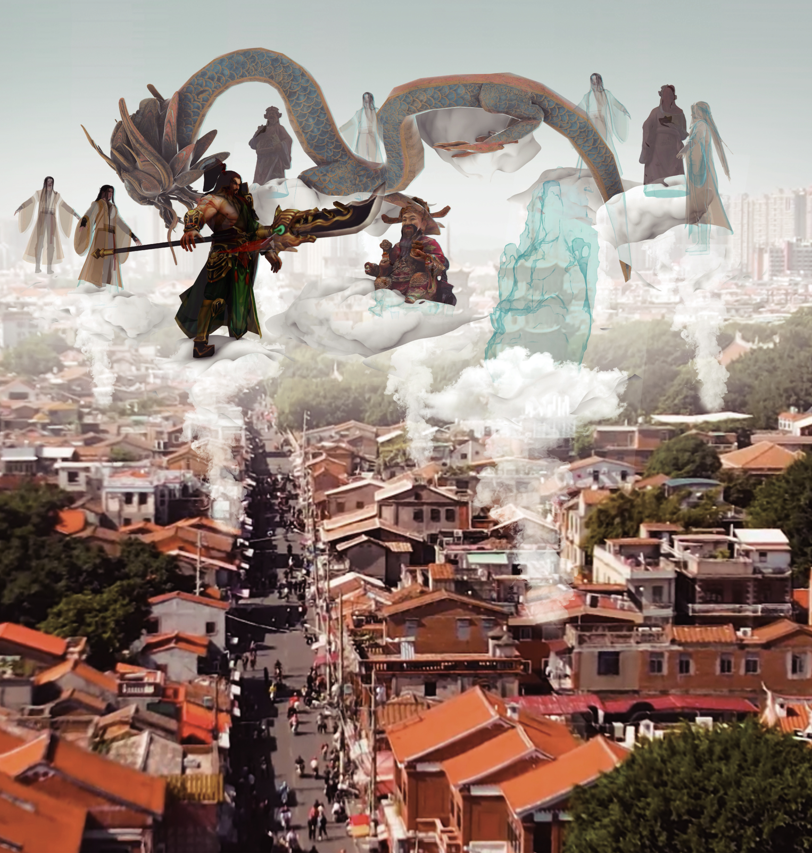
Each year, the Gods of Quanzhou gather to showcase their powers.
Are you ready to join them as a chosen deity? Select your divine character and discover your unique powers in the Pu-Jing temples!
Site Location

The project is set in Quanzhou, an ancient town in Fujian Province, China, recognized as a UNESCO World Heritage City in 2021. Despite its rich cultural heritage, the Pu-Jing Temples have been overlooked and are gradually disappearing due to rapid urban development. These temples are vital public spaces where locals live, socialize, and frequently conduct pilgrimages, reflecting the strong belief in Pu-Jing Gods. This project aims to engage the public in revitalizing the temples through a gamified approach, using the dynamic religious contexts of Pu-Jing Temples.
City, Temples, and Gods
Pu-Jing System and Temples
The term “Pu-Jing Temple” has been the subject of much academic discussion, with varying interpretations. This paper adopts Wang Yifan’s view, which defines “Pu” as an official administrative division and “Jing” as a basic unit defined by spatial division and local beliefs. The two do not form a clear hierarchical relationship but have a spatial dependency (2018). Each Pu-Jing temple corresponds to its respective Pu or Jing, serving as a focal point for community gatherings and spiritual activities.
As a typical representative of “multi-point distribution” cultural heritage in urban environments, Pu-Jing Temples play an important role in urban development, interacting with different urban environments or divisions to form independent yet interrelated “urban heritage systems.” They also hold rich cultural heritage value. As an important part of Quanzhou’s religious culture, they preserve architecture and installations related to local beliefs and rich intangible cultural heritage such as religious culture and rituals. This provides valuable material for exploring the documentation and display of cultural heritage. Additionally, Pu-Jing Temples in Quanzhou are an important part of contemporary urban life, closely linked to the lives of urban residents, and serve as a vital medium for showcasing Quanzhou’s unique religious culture, making them highly practical.
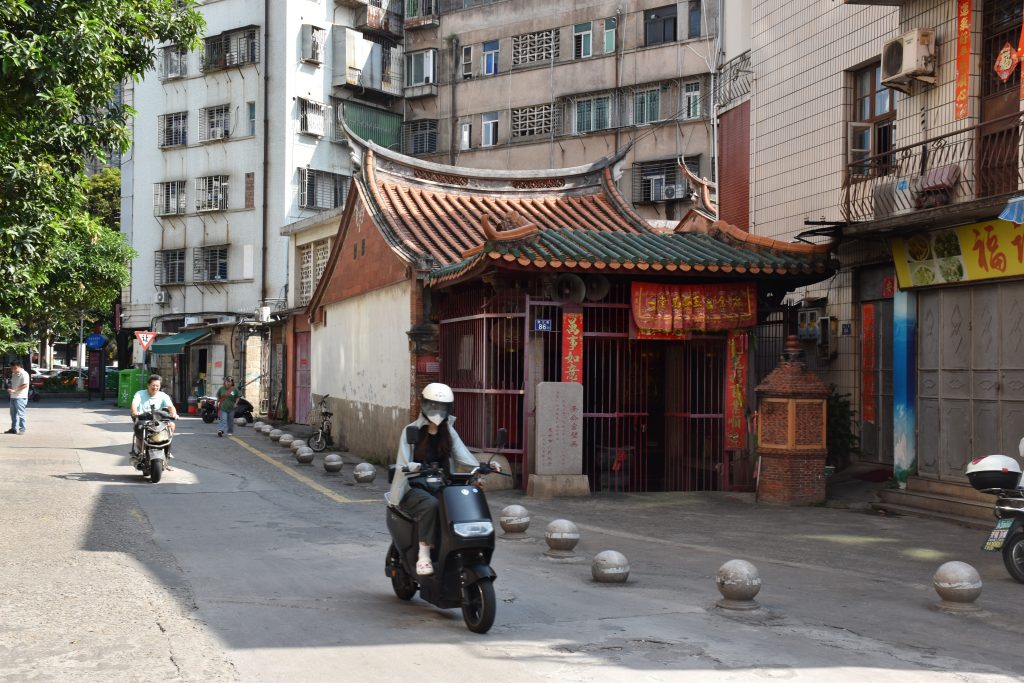
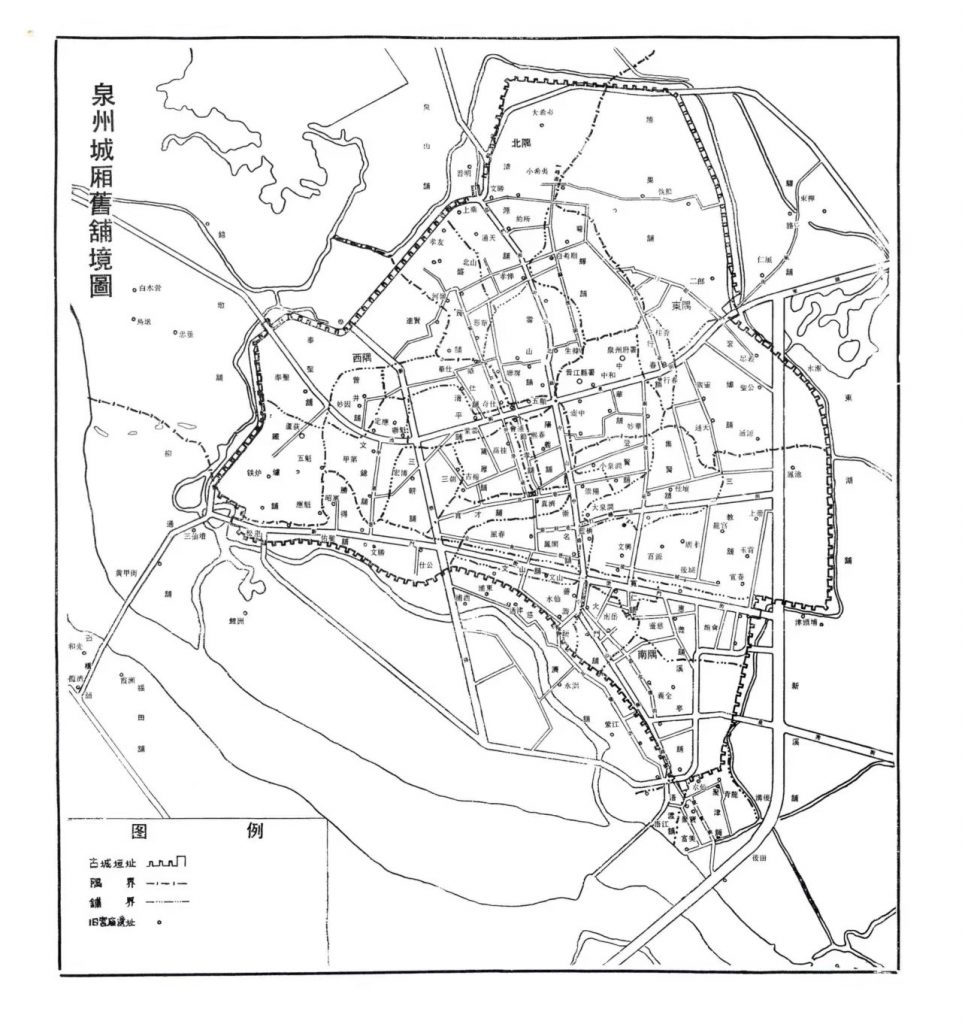
Source: 《泉州古城铺境神》
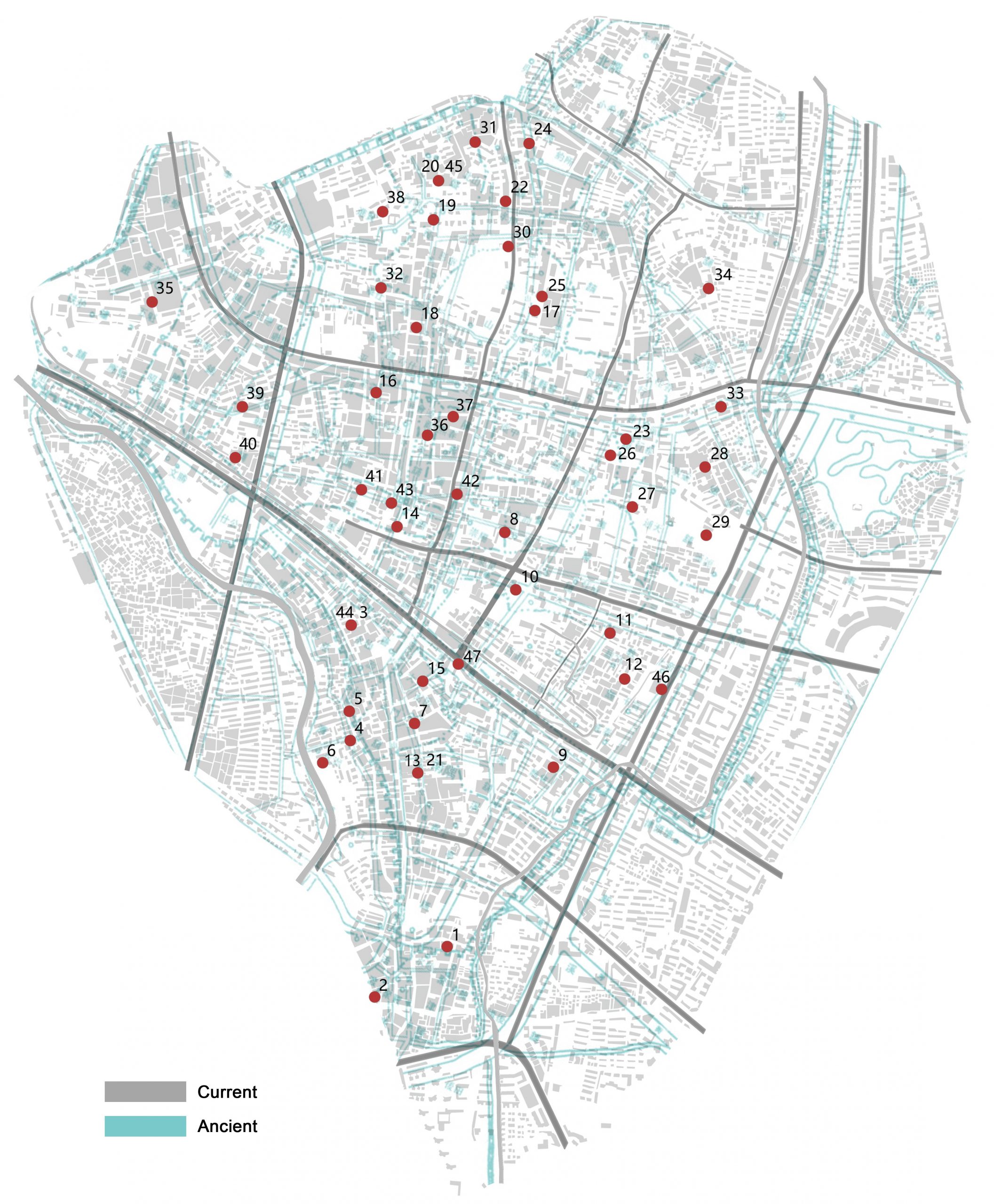
However, with the development of urban modernization, the survival and development of Pu-Jing Temples face significant challenges as traditional communities are updated. Of the more than one hundred Jing Temples in the thirty Pu areas of the Qing Dynasty ancient city, less than half remain. The influence of the existing Pu-Jing Temples is limited to the community, and the historical information of the temples and the cultural uniqueness of the Pu-Jing Temple system are not fully recognized.
The current protection and display of Quanzhou’s Pu-Jing Temples mainly involve the issuance of documents such as the “Implementation Plan of Quanzhou City for the Overall Plan of Minnan Cultural Ecology Protection Zone” and the “Special Plan for the Protection of Key Areas of Overall Protection of 21 Minnan Cultural Ecology Protection Zones in Quanzhou City.” These documents require the listing and protection of cultural heritage within the city. Management committees, mainly composed of nearby residents (primarily middle-aged and elderly), organize and manage the daily activities and festivals of the temples. Digital platforms like Quanzhou History Network (http://www.qzhnet.com/) have been established to record and organize historical information about the Pu-Jing Temples. However, there are still two main issues.
- There is a lack of clearly defined and well-organized maps of Pu-Jing Temples. Due to historical changes, existing map information does not entirely match the current state of Pu-Jing Temples. The remaining temples are scattered within residential areas, making them difficult to find without effective guidance, especially for those unfamiliar with the area, who may lack the motivation to learn about the temples’ history.
- The cultural heritage value of the ancient city’s Pu-Jing Temple system, as an essential component of local heritage, has not been fully recognized by the public. The information on the historical changes, deities worshiped, and rituals of the Pu-Jing Temples is not adequately presented, necessitating effective measures to showcase their cultural heritage value to the public.
Religious Believes and Gods
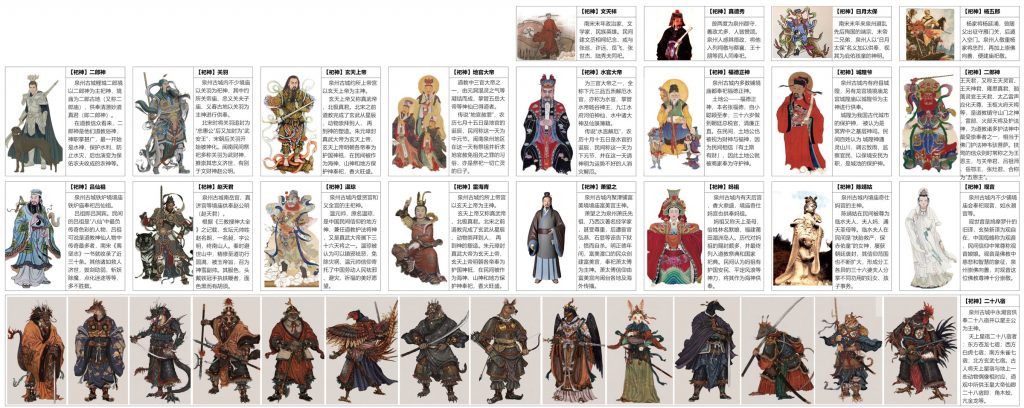
Each “Pu-Jing” deity oversees the spiritual well-being of people, while the temple’s administrators communicate directives from higher authorities such as the local government, county, and even the imperial court. This system allows them to manage the lives and moral conduct of the populace. This approach achieves a form of governance that combines indirect control with effective management, allowing rulers to maintain order and guide the community’s thoughts and ethics without direct intervention.
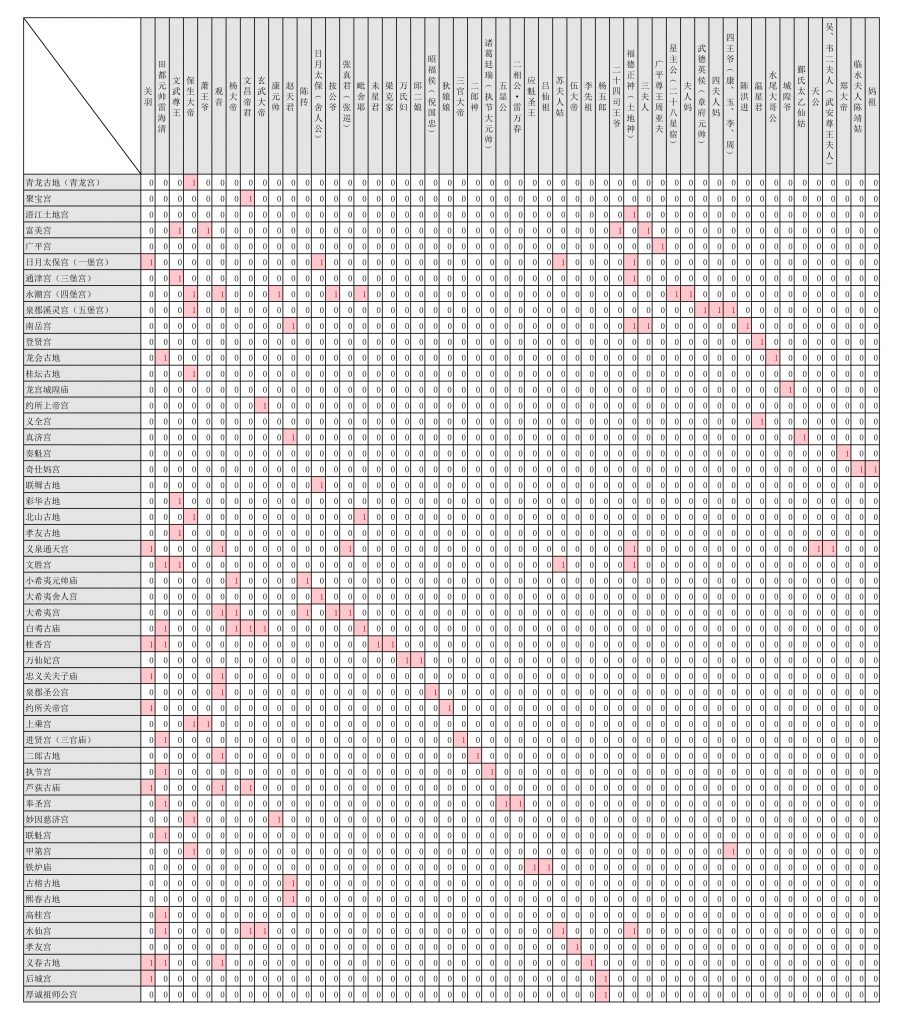
This chart illustrates the relationship between 52 existing Pu-Jing temples and their associated deities. Each row represents a specific temple, and each column represents a deity worshiped within the Pu-Jing system. The chart uses markers to indicate which deities are associated with which temples, showing a comprehensive mapping of religious affiliations across the different temples surveyed in the study. This visual representation highlights the diversity and complexity of deity worship within the Pu-Jing temples in Quanzhou.
Game Design
Game Mechanism
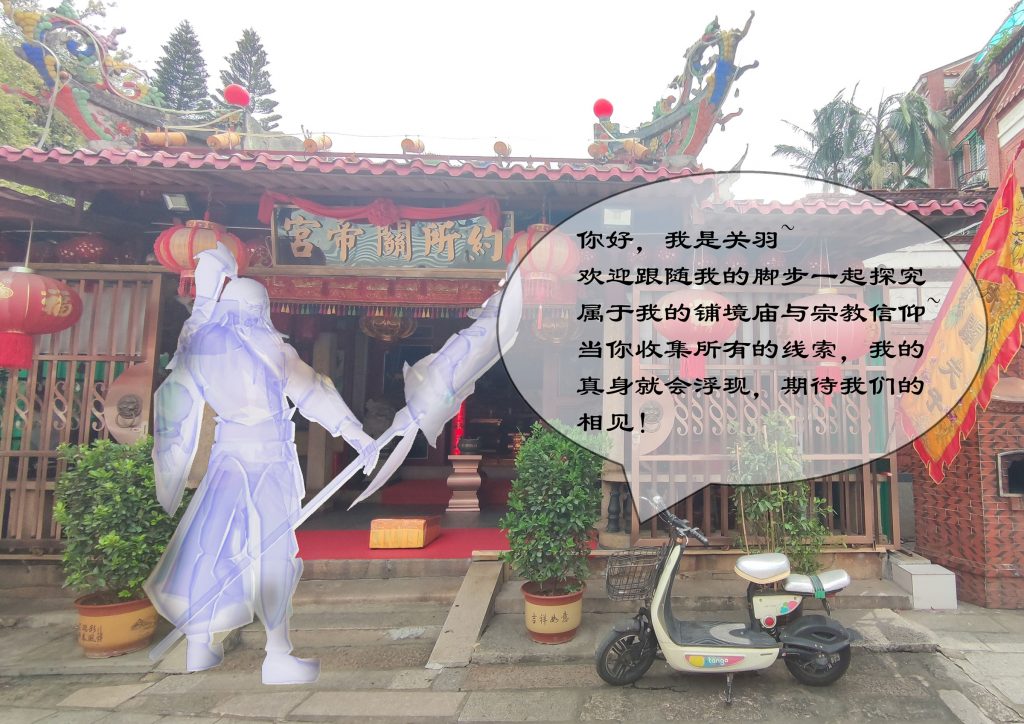

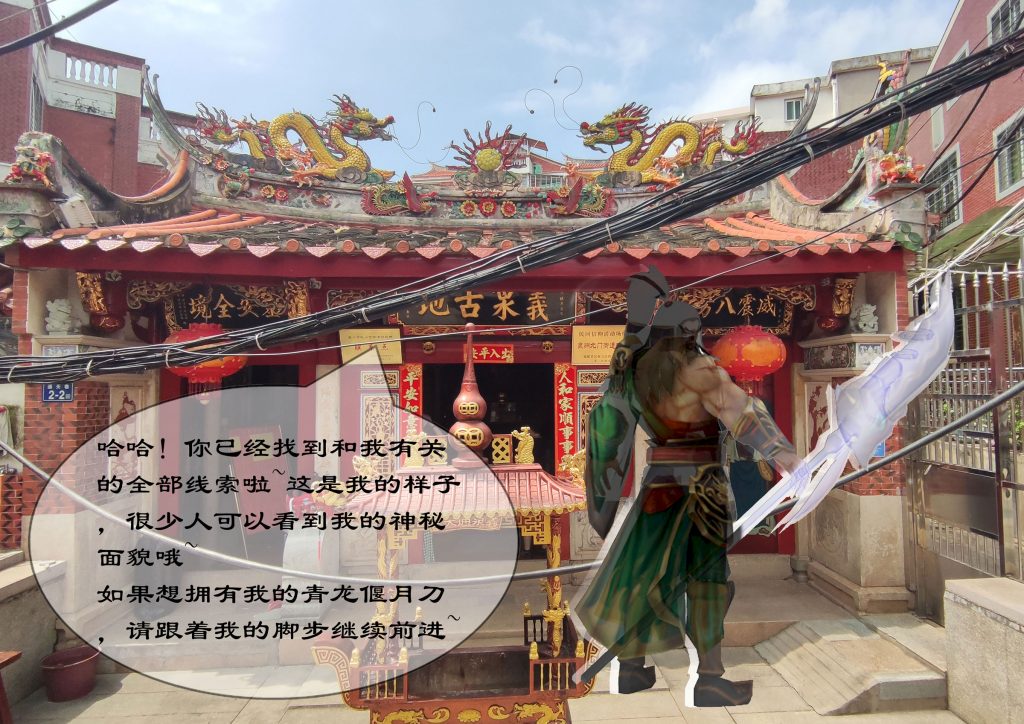
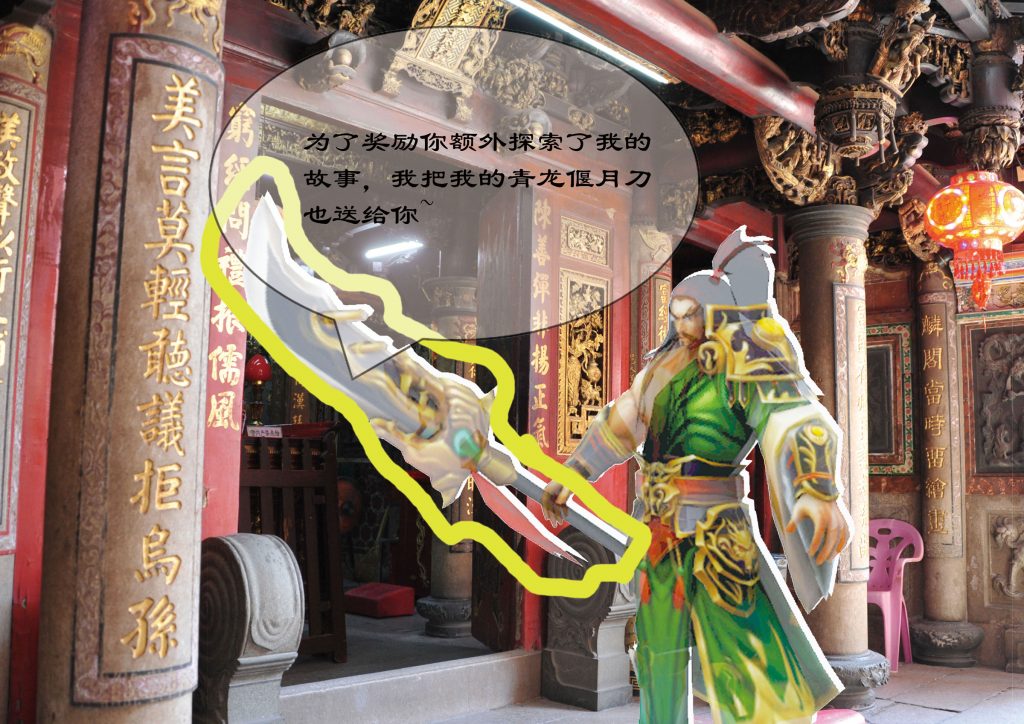
When players enter the game, they can choose a deity to worship, unlocking the locations of all Pu-Jing Temples dedicated to that deity. Players can visit these temples to complete tasks such as gathering evidence and restoring architecture. Completing tasks at each temple awards players a puzzle piece of the chosen deity. Collecting three pieces completes the puzzle, which can be exchanged for rewards. Players can also explore additional temples and gather information about other deities to unlock more puzzle pieces and rewards.

Game Prototype
- Deity Information Gathering: Players search the site for information about their chosen deity using mobile scanning and photography, collecting evidence in their “backpack.” Completing a certain amount of evidence encourages players to learn about the deities worshiped in each Pu-Jing Temple and observe the site’s layout.
- Historical Restoration: Players receive information about the building’s original orientation, size, and statues. They must restore the building to its current form through moving, adding, or rotating elements. This fosters careful observation of the current structure and an understanding of its historical evolution.
- Ritual Interaction Experience: Players use AR to experience rituals like burning Wang boats or processions. This immersive interaction enhances understanding of rituals while reducing the cost of live demonstrations.
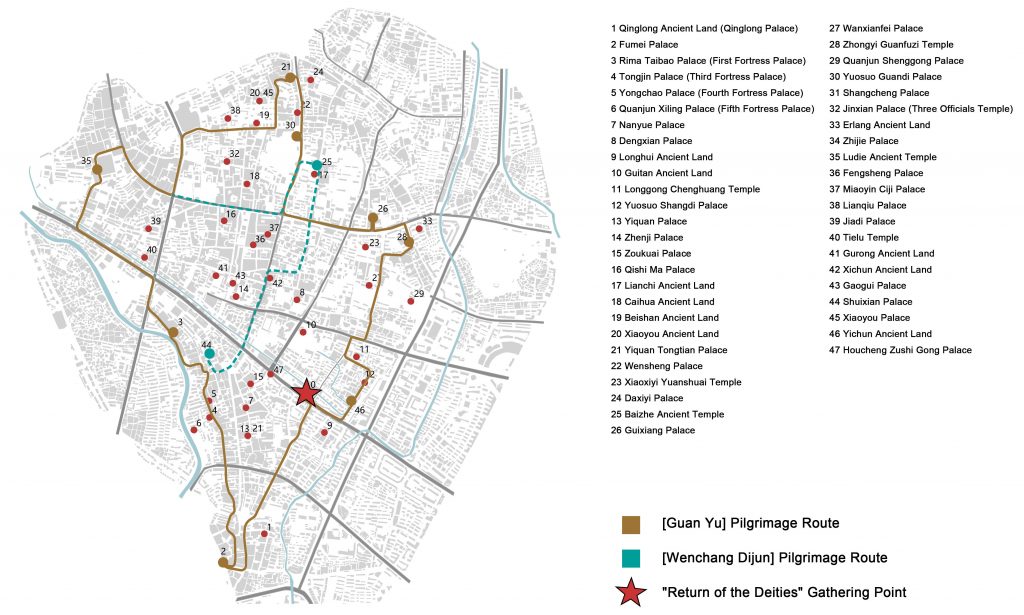
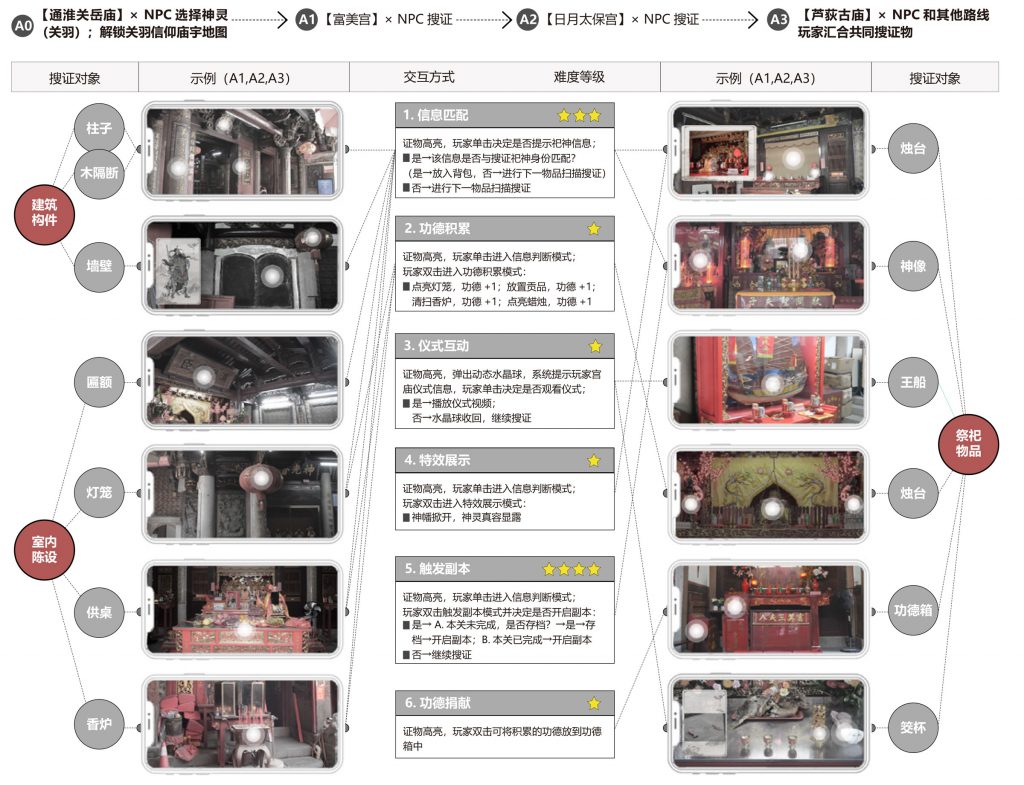
Additional Information:
— 80% Concept Proposal
— 50% Game Design
— 100% Technical Development
— 25% Drawings
Supervisor: Zhuge Jing, Associate Professor in Southeast University
Group Member: Liu Lin, Wang Zhicheng, Chen Yali, Yao Peifan

Leave a Reply